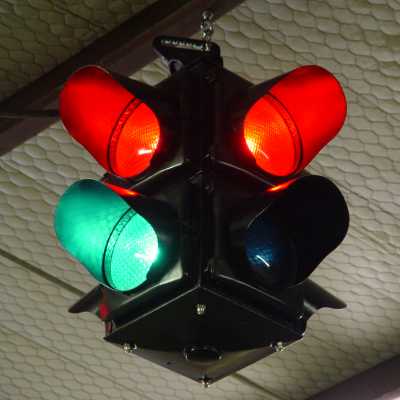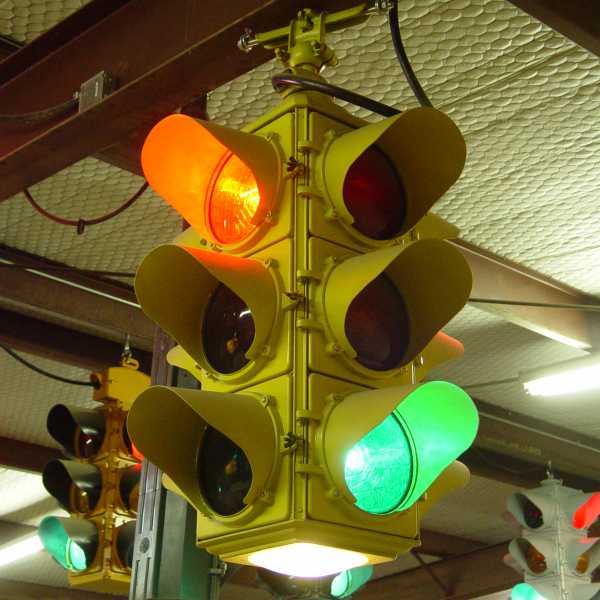Willis Lamm's
|
|
SIGNAL APPLICATIONS FOR SET DECORATION |
Click on each photo to see a larger view of each signal.
Many signals common in the 1950s were first produced at the end of WW-II. They can be seen here.
| 1950s Era 4-Way Signals |
|
Crouse-Hinds Type M 2-Color
Many parts of the country still installed two-color signals in the 1950s and in fact a handful are still in service to day. Two color lights didn't switch directly from green to red. Typical early signals either went dark for about three seconds during signal changes or, more predominantly, the red came on three seconds (over the green) as a warning before the signal changed. This Type M signal came out around 1952. |

|
|
Crouse-Hinds Type M 3-Color
The Type M was a popular 4-way signal. While most communities were switching to the modern color sequence (G-Y-R-G) a number of towns still had yellow displays when the signal changed from red to green. (The idea was to advise motorists to engage their stickshifts and advise pedestrians in the crosswalk that the light was changing.) Some jurisdictions programmed signals to display yellow on all four sides for 3 to 4 seconds during changes. Others had the yellow indication overlap the red and green indications so there would be no confusion as to which way the signal was changing. |

|
|
General Electric (GE)
GE was another major producer of traffic signals. This GE has "spiderweb" pattern lenses from the late 1940s. GE signals also came with a down light option for lighting signs that hung from the signals or for illuminating a traffic policeman. This is probably a mid 1950s signal since it came out of Pittsburgh and the original color was yellow. |

|
|
Sargent-Sowell
Sargent-Sowell started out as Sargent and Sowell in the late 1930s. In the 1950s Southern Switch of Shreveport, LA started producing a more modern line of signals under the Sargent-Sowell brand. These signals were popular in the southern states and a number are still in service today. |

|
Signals can be repainted for specific set requirements. Many can either be wire hung or adapted for post mounting.
Additional models and designs can be located for specific requirements.
Continue to Part Four
Return to Part Two
Return to Signals Page